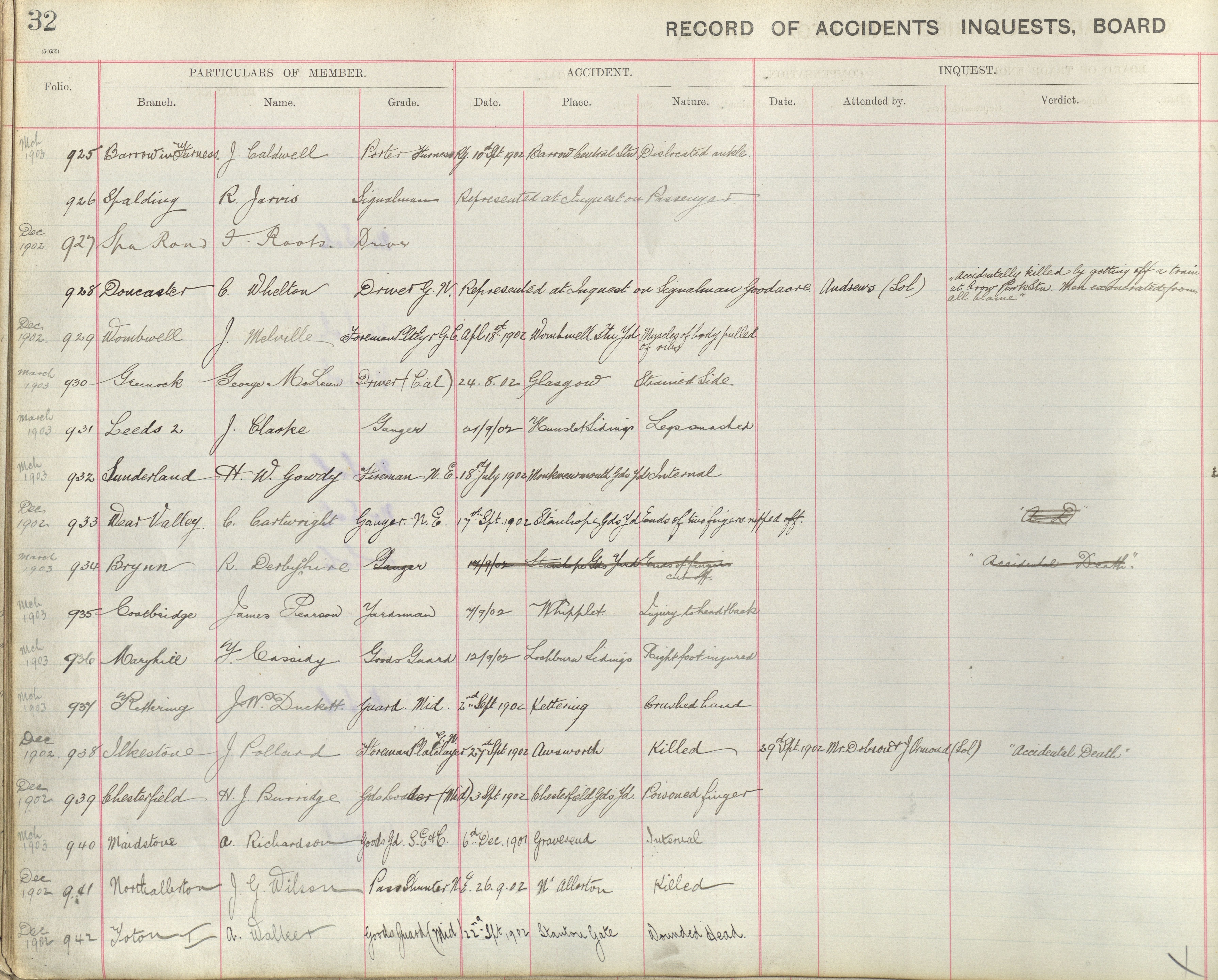Worldwide railway collaboration!

Post by Dr Mike Esbester, University of Portsmouth
How do you make it easy to access the details found in a unique early 20th century handwritten volume?
Digitise or transcribe.
Easier said than done, though, when that volume runs to nearly 120 pages and over 2,000 entries. Yet that’s exactly what has happened – courtesy of the 2019 ‘Transcription Tuesday’ event – and the data transcribed has just been released!Link opens in a new window
The event came through Who Do You Think You Are? Magazine and a project that the Modern Records Centre is co-leading, Railway Work, Life & DeathLink opens in a new window, looking at accidents to British and Irish railway employees.
We digitised and made available a volume of records produced by the Amalgamated Society of Railway Servants (ASRS), recording details of legal cases in which the union defended the interests of its members. It was created between 1901 and 1905, and covered Ireland, Scotland, Wales and England. We estimated that it contained around 2,000 handwritten entries, but until this point no-one had sufficient time to go through them all and explore what they had to offer.
The good news is now it’s easy to do exactly this: and people already are!
In Transcription Tuesday, volunteers from across the world were invited to spend some of their time on a single day – Tuesday 5 February 2019 – transcribing from images of the volume’s pages into a shared spreadsheet we’d created. We hoped they might complete the volume – and they did! By mid-afternoon, it turned outLink opens in a new window. (Fortunately we had another set of records as a reserve, which they made good inroads into, transcribing a further 1,500 or so cases – but that’s another story…)
The legal volume contained 2,152 entries, about half of which related to accidents (though all entries have been fully transcribed). The volume has all sorts of people and places across the UK and Ireland, from Meikle Earnock, Lanarkshire, via Pyebridge Junction in Derbyshire, to Stoats Nest, Surrey. Health and safety was clearly a major part of the ASRS’ work, and through the cases detailed in this volume (MSS.127/AS/7/3) we can see – once again – how dangerous work on the railway could be.

Spare a thought, then, for signalman Alfred Hanley, injured in October 1900 at Pocklington signal box and who subsequently died, leaving a widow & 5 children. The railway company denied liability and ‘gifted’ the family £20.
Or fireman H Simpson on the North Eastern Railway, who lost his left arm at Selby on 8 March 1905. The volume records that he was awarded 11/6 compensation per week – but also that he was offered a settlement of a lump sum of £25 and 18 shillings per week, which he seems to have declined, as he resumed work as a messenger at York: quite a different role to his previous occupation! For this he received 19 shillings per week, and 2 shillings per week in compensation.
Some cases spoke to the power of the employers over the lives of their staff. One of the scantest entries is that of a worker with the surname Hawthorne and who was a member of the Mexborough 2 branch. The volume gives only one other piece of information – but one which explains the lack of other details: ‘would not claim for fear of offending his employers.’
Through details like these – and there are many other, varied, cases in the volume – we gain a real insight into the day-to-day working environment and pressures of the Victorian and Edwardian railway system. They also show us the wider impact of railway work, on families and communities.
(The other half of the entries in the volume covered a range of misdemeanours and indiscretions. Pilfering features, as do embezzlement, furious driving, slander, and the occasional good deed with an unintended consequence, like signalman Walker of the Dunford Bridge branch, who was summarily dismissed in 1905 for lending a funnel to a farmer to help him drain a leaking barrel of oil!)
We’d end by saying a big ‘thank you’ to Who Do You Think You Are? Magazine and most importantly all those volunteers who gave up some of their time to make the transcriptions. Without them it wouldn’t have been possible – and now we have an excellent resource from which everyone can benefit.Link opens in a new window
